Monday, December 3rd 2018

NVIDIA Presents the TITAN RTX 24GB Graphics Card at $2,499
NVIDIA today introduced NVIDIA TITAN RTX , the world's most powerful desktop GPU, providing massive performance for AI research, data science and creative applications. Driven by the new NVIDIA Turing architecture, TITAN RTX - dubbed T-Rex - delivers 130 teraflops of deep learning performance and 11 GigaRays of ray-tracing performance.
"Turing is NVIDIA's biggest advance in a decade - fusing shaders, ray tracing, and deep learning to reinvent the GPU," said Jensen Huang, founder and CEO of NVIDIA. "The introduction of T-Rex puts Turing within reach of millions of the most demanding PC users - developers, scientists and content creators."Ultimate PC GPU
NVIDIA's greatest leap since the invention of the CUDA GPU in 2006 and the result of more than 10,000 engineering-years of effort, Turing features new RT Cores to accelerate ray tracing, plus new multi-precision Tensor Cores for AI training and inferencing. These two engines - along with more powerful compute and enhanced rasterization - enable capabilities that will transform the work of millions of developers, designers and artists across multiple industries.Designed for a variety of computationally demanding applications, TITAN RTX provides an unbeatable combination of AI, real-time ray-traced graphics, next-gen virtual reality and high performance computing. It delivers:
TITAN RTX transforms the PC into a supercomputer for AI researchers and developers. TITAN RTX provides multi-precision Turing Tensor Cores for breakthrough performance from FP32, FP16, INT8 and INT4, allowing faster training and inference of neural networks. It offers twice the memory capacity of previous generation TITAN GPUs, along with NVLink to allow researchers to experiment with larger neural networks and data sets.
Perfect for Data Scientists
A powerful tool for data scientists, TITAN RTX accelerates data analytics with RAPIDS. RAPIDS open-source libraries integrate seamlessly with the world's most popular data science workflows to speed up machine learning.Content Creators Create Their Best Work
TITAN RTX brings the power of real-time ray tracing and AI to creative applications, so 5 million PC-based creators can iterate faster. It also delivers the computational horsepower and memory bandwidth needed for real-time 8K video editing.Available This Month
TITAN RTX will be available later this month in the U.S. and Europe for $2,499.
"Turing is NVIDIA's biggest advance in a decade - fusing shaders, ray tracing, and deep learning to reinvent the GPU," said Jensen Huang, founder and CEO of NVIDIA. "The introduction of T-Rex puts Turing within reach of millions of the most demanding PC users - developers, scientists and content creators."Ultimate PC GPU
NVIDIA's greatest leap since the invention of the CUDA GPU in 2006 and the result of more than 10,000 engineering-years of effort, Turing features new RT Cores to accelerate ray tracing, plus new multi-precision Tensor Cores for AI training and inferencing. These two engines - along with more powerful compute and enhanced rasterization - enable capabilities that will transform the work of millions of developers, designers and artists across multiple industries.Designed for a variety of computationally demanding applications, TITAN RTX provides an unbeatable combination of AI, real-time ray-traced graphics, next-gen virtual reality and high performance computing. It delivers:
- 576 multi-precision Turing Tensor Cores, providing up to 130 teraflops of deep learning performance.
- 72 Turing RT Cores, delivering up to 11 GigaRays per second of real-time ray-tracing performance.
- 24GB of high-speed GDDR6 memory with 672GB/s of bandwidth - 2x the memory of previous-generation TITAN GPUs - to fit larger models and datasets.
- 100GB/s NVIDIA NVLink can pair two TITAN RTX GPUs to scale memory and compute.
- Incredible performance and memory bandwidth for real-time 8K video editing.
- VirtualLink port provides the performance and connectivity required by next-gen VR headsets.
TITAN RTX transforms the PC into a supercomputer for AI researchers and developers. TITAN RTX provides multi-precision Turing Tensor Cores for breakthrough performance from FP32, FP16, INT8 and INT4, allowing faster training and inference of neural networks. It offers twice the memory capacity of previous generation TITAN GPUs, along with NVLink to allow researchers to experiment with larger neural networks and data sets.
Perfect for Data Scientists
A powerful tool for data scientists, TITAN RTX accelerates data analytics with RAPIDS. RAPIDS open-source libraries integrate seamlessly with the world's most popular data science workflows to speed up machine learning.Content Creators Create Their Best Work
TITAN RTX brings the power of real-time ray tracing and AI to creative applications, so 5 million PC-based creators can iterate faster. It also delivers the computational horsepower and memory bandwidth needed for real-time 8K video editing.Available This Month
TITAN RTX will be available later this month in the U.S. and Europe for $2,499.
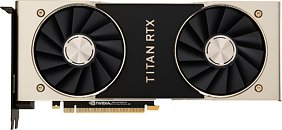
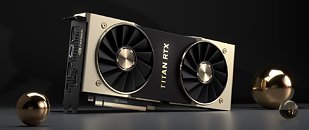
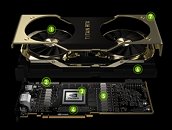
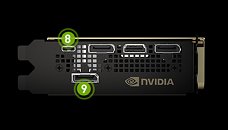
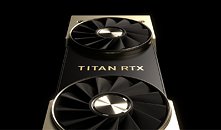

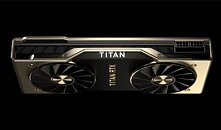
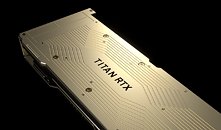
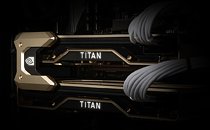
193 Comments on NVIDIA Presents the TITAN RTX 24GB Graphics Card at $2,499
Another way to look at it is this, if this card is twice as fast as my Vega 64, it's >6x the cost for 2x the performance (and 2x performance might be pushing it.)
Honestly, if anyone is buying the Titan RTX for gaming only, well, good on them for having that ability in the first place. But the reality is gaming is second fiddle to its data science and compute capabilities (sans DP). So to insist this is a gamer card first and foremost, isn't an accurate depiction. It CAN game, and is the FASTEST gaming card out there (likely), but it does the other stuff better than Titan V and NVIDIA markets the card towards that community first. Gaming is really a secondary mention in their PR. But b/c it doesn't say Quadro specifically (which is another can of worms) some default to it primarily being a gaming card (and forgets those who can use the rest of the GPU). It's a crossover card. Buy it just for gaming and yeah that $/perf gets worse! But if you use its data science and compute capabilities (were time is money) and game with it... seems like it can pay for itself a lot quicker than the MORE expensive Titan V, and isn't quite a quadro. Sure, it isn't $2, which I think would be a good pricepiont, but it is cheaper than last generation for higher performance (again outside of DP). If they gave it full DP capabilities, then it would vulture sales from the Quadro line. Worth it is in the eye of the beholder.... though everyone wants lower pricing.
Zooming in a bit, we have already concluded that, while it still remotely a great perf/$ card, it will be, according to ATech, potentially 15% faster (in anything not DP which Vya, you minimized that impact in another thread yesterday) than the Titan V while costing almost 17% less than its previous generation. This is EXACTLY what some of the people are complaining about is the YOY (or Gen over Gen) price increase. Now that it is actually better, that same contingent (conveniently?) forgets about that and falls back to barking (speaking of dog shit - and there are those dramatic, polarizing, toxic words again... :() about the overall cost (which again, they are right). Now RT performance is actually going to playable as well... it seems like the arguments that were there are becoming less and less as time goes on. Which is a good thing for all consumers, right?
One also has to see the prices of the true gaming focused GPUs in the market now...the price to performance ratio isn't a static value.
2080Ti = $1300
1080Ti = $1100
V64 = $440
***2080Ti = 35% faster at 1440, 44% faster at 4K UHD and costs 18% more.
Against the V64 it is 65% faster at 1440, and 72% faster at 4K UHD while costing almost double. The problem is the V64 isn't anywhere close when comparing these cards (I did this for consumer flagship to consumer flagship. V64 will need to turn down eye candy to play 4K UHD and hit 60 FPS in most titles.
2080 = $720
1080 = $580
V64 = $440
***2080 = 33% faster at 1440, 38% faster at 4K UHD and costs 24% more.
Against the V64, the 2080 is 36% faster at 1440, and 38% faster in 4K UHD while costing ~64% more.
2070 = $499
1070 = $335
V64 = $440
V56 = $417
2070 is 25% faster than 1070 at 1080p, 28% faster at 1440 and costs 48% more.
2070 is 6% faster than V64 at both 1080p and 1440 over V64 and costs 13% more
***2070 is 22% and 23% faster than V56 at 1080p and 1440 and costs 19% more.
What I take away from this is in the current state of the market there are a couple of SKUs where the RTX cards are the better buy over the 1 series just looking at performance. But, performance isn't everything. Those who can afford these cards and need the performance, don't give as much of a hoot about pricing. Lower is always better, I do get that :). These metrics do not include considerations RE: power/perf. ratio, nor the RTX capabilities which are now playable thanks to some quick updates. Throw AMD in there and clearly its no contest. The Vega cards rule the price to performance, but, they aren't a capable 4K UHD card, nor High Hz 1440 card... and their pricing reflects that kind of performance. When one considers power/perf ratios there it gets ugly. But look at the 2070 and V64. 13% more $ for half the power use and 6% performance increases plus RT capabilities. Or the 2070 V V56... 22/23% faster for 19% cost... you get RT and a card that uses a lot less power and it wins the coverted $/perf. ratio.
Anyway, just throwing that out there. Apologies if I borked any numbers. These values were taken from here for reference: www.techpowerup.com/reviews/NVIDIA/GeForce_RTX_2070_Founders_Edition/33.html
EDIT: WTH is with that GIANT arse pic from a phone. Resize that shiz... sheesh! LOLIt is an upgrade in performance though. Its just that price/perf. ratio that people get hung up on. Clearly they are better performing cards.
A point which was played down (by Vya), but still a real gimping, in a different thread.
So the Titan V is a special snowflake and allows for the full DP capabilities while Quadro does not? What am I missing on that front? Note I wasn't talking about count, but performance in general. I don't have much knowledge in that area, admittedly. ;)@Vya Domus - I just saw this edit...
Gimped is an inflammatory word? Are you serious or just trying to bait me into an argument with that? You used the word handicapped (Solaris quoted), I used gimped. I was just playing off your words with the intent to show that is not as fast... apologies if that managed to get your hackles up. :(
Again, I am asking for help to learn so I can understand better. Im really not looking for vague and, what I feel are, dismissive replies, but genuine help to understand. The RTX Quadros have what performance for DP? Titan V has what for DP performance? Titan RTX has what for DP performance? Sorry if what you are saying it isn't sinking in fast enough on my end... a more detailed explanation or link would be great. :)
Spending the same amount of money to get the same performance as last generation is why this is a side step instead of an upgrade.
Now personally I've been waiting for RT since I saw my reflection in Duke Nukem 3D 20 years ago, so I'm looking forward to seeing where this goes.
Same as on the Titan and 2080ti. It's not gimped in any way, the only differences stem from clockspeed.No, I didn't.
*throws hook back. Not. Gonna. Dait'.
Unlike what some of you think Nvidia can't pull miracles and fit everything in this world on a single chip. Some things need to go.
But it's not. You can choose between DP or RT performance but you can't have both. They likely couldn't have done it even if they wanted.
Refers to the FP64 mathematical performance, it's historically what separates Nvidia's consumer cards (GTX/RTX/Titan) from the industrial ones (Quadro/Tesla/etc). Though they did improve performance on the Titan XP via a driver update in response to Vega 64 teabagging it for half the price due to their standard gimping of DP performance.